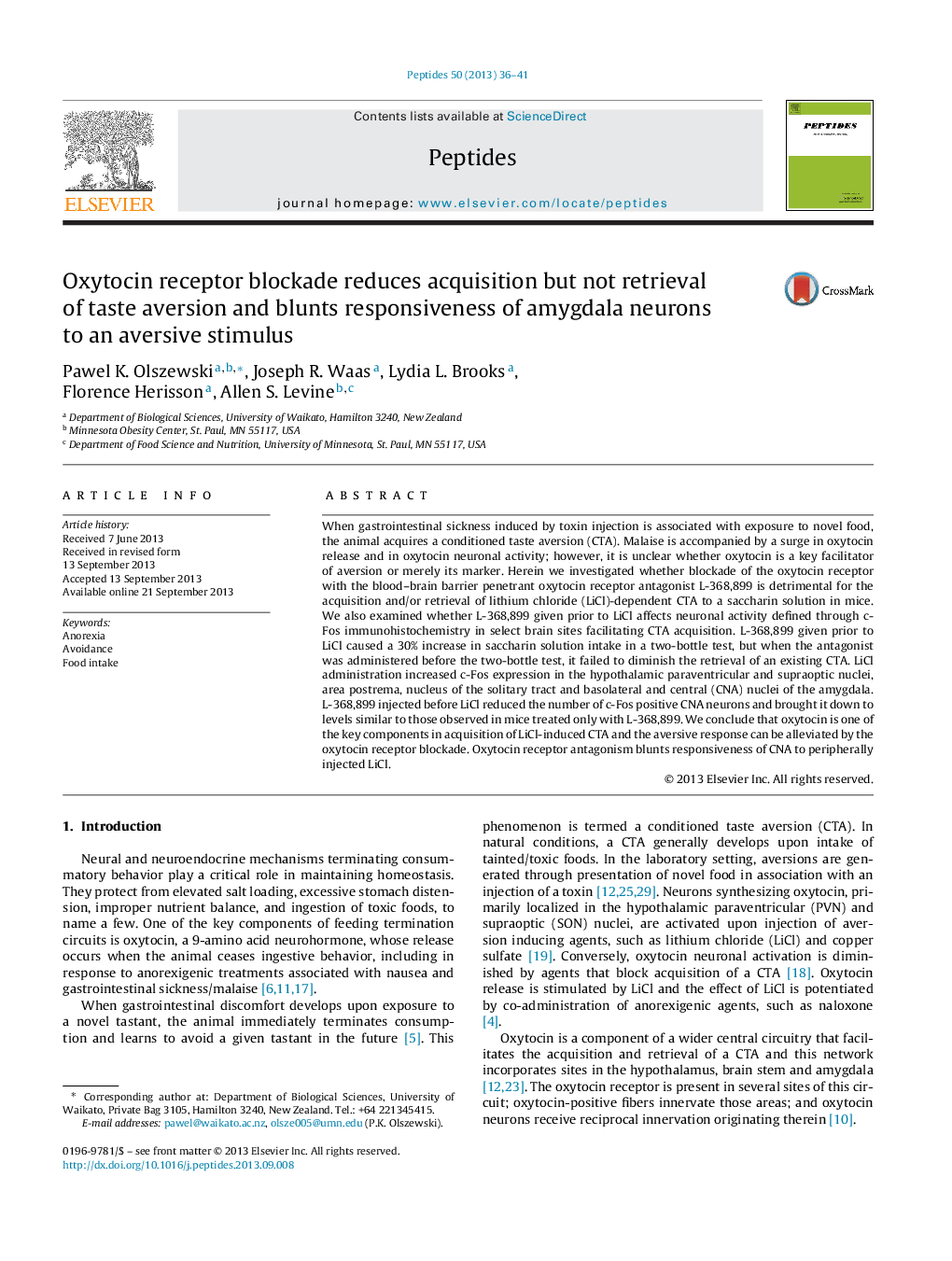| Article ID | Journal | Published Year | Pages | File Type |
|---|---|---|---|---|
| 2006144 | Peptides | 2013 | 6 Pages |
Abstract
When gastrointestinal sickness induced by toxin injection is associated with exposure to novel food, the animal acquires a conditioned taste aversion (CTA). Malaise is accompanied by a surge in oxytocin release and in oxytocin neuronal activity; however, it is unclear whether oxytocin is a key facilitator of aversion or merely its marker. Herein we investigated whether blockade of the oxytocin receptor with the blood-brain barrier penetrant oxytocin receptor antagonist L-368,899 is detrimental for the acquisition and/or retrieval of lithium chloride (LiCl)-dependent CTA to a saccharin solution in mice. We also examined whether L-368,899 given prior to LiCl affects neuronal activity defined through c-Fos immunohistochemistry in select brain sites facilitating CTA acquisition. L-368,899 given prior to LiCl caused a 30% increase in saccharin solution intake in a two-bottle test, but when the antagonist was administered before the two-bottle test, it failed to diminish the retrieval of an existing CTA. LiCl administration increased c-Fos expression in the hypothalamic paraventricular and supraoptic nuclei, area postrema, nucleus of the solitary tract and basolateral and central (CNA) nuclei of the amygdala. L-368,899 injected before LiCl reduced the number of c-Fos positive CNA neurons and brought it down to levels similar to those observed in mice treated only with L-368,899. We conclude that oxytocin is one of the key components in acquisition of LiCl-induced CTA and the aversive response can be alleviated by the oxytocin receptor blockade. Oxytocin receptor antagonism blunts responsiveness of CNA to peripherally injected LiCl.
Keywords
Related Topics
Life Sciences
Biochemistry, Genetics and Molecular Biology
Biochemistry
Authors
Pawel K. Olszewski, Joseph R. Waas, Lydia L. Brooks, Florence Herisson, Allen S. Levine,
